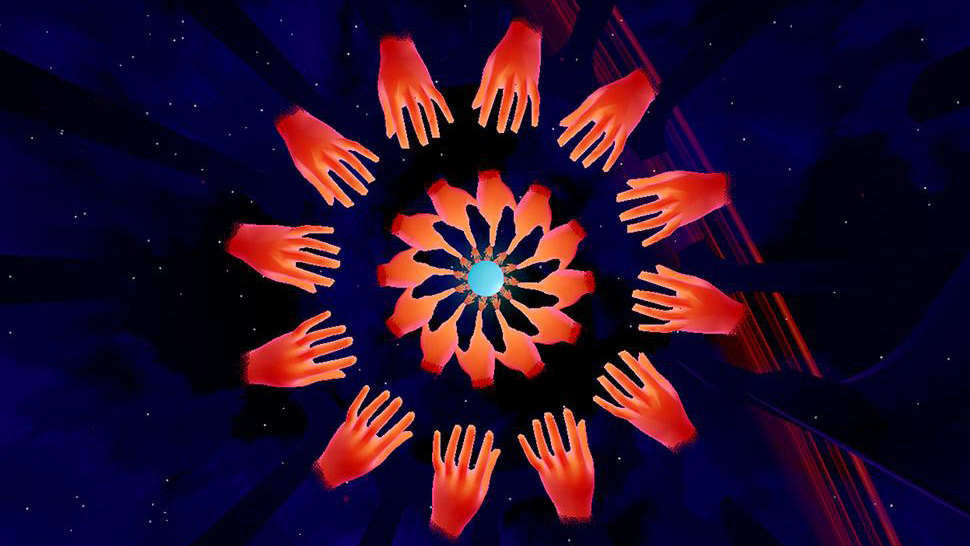
TACTILE/DIGITAL
Hand tracking makes for an immersive experience where users won’t need to use controllers. The conceptual short circuit? The word digital comes from the Latin word for finger (‘digit’), which is what you use to touch things – tactile. How can hand tracking be aesthetically relevant? This is the question Sjoerd van Acker (a.k.a. No Fish) wanted to answer. Van Acker is the creator of this VR experience produced by Biennale College Cinema VR. Let’s see about these answers, then. Reality exists inasmuch as what we ‘touch’ generates an opposing force: this reaction is what defines and identifies the object. In the integrated, uniform universe of Virtual Reality, where any distance between subject and object of the observation reduces to zero, going after the reproduction of the sense of touch is like walking around a mirror maze.
Can we really say we interact with anything when immersed in a world that does not identify us, does not recognize us as subject separated from it, but integrates us and blends us in a uniform simulacrum of reality? Van Acker’s Elele (Turkish for ‘hand in hand’) questions our role as actors and spectators immersed in a virtual world.
With this surprising VR work, we commence our journey into the Venice Immersive programme and try to understand the aesthetic potential of the shortlisted works and the new trends in a challenging new world of creativity.
ELELE
BIENNALE COLLEGE CINEMA VR
by Sjoerd van Acker
(Netherlands, 6’)